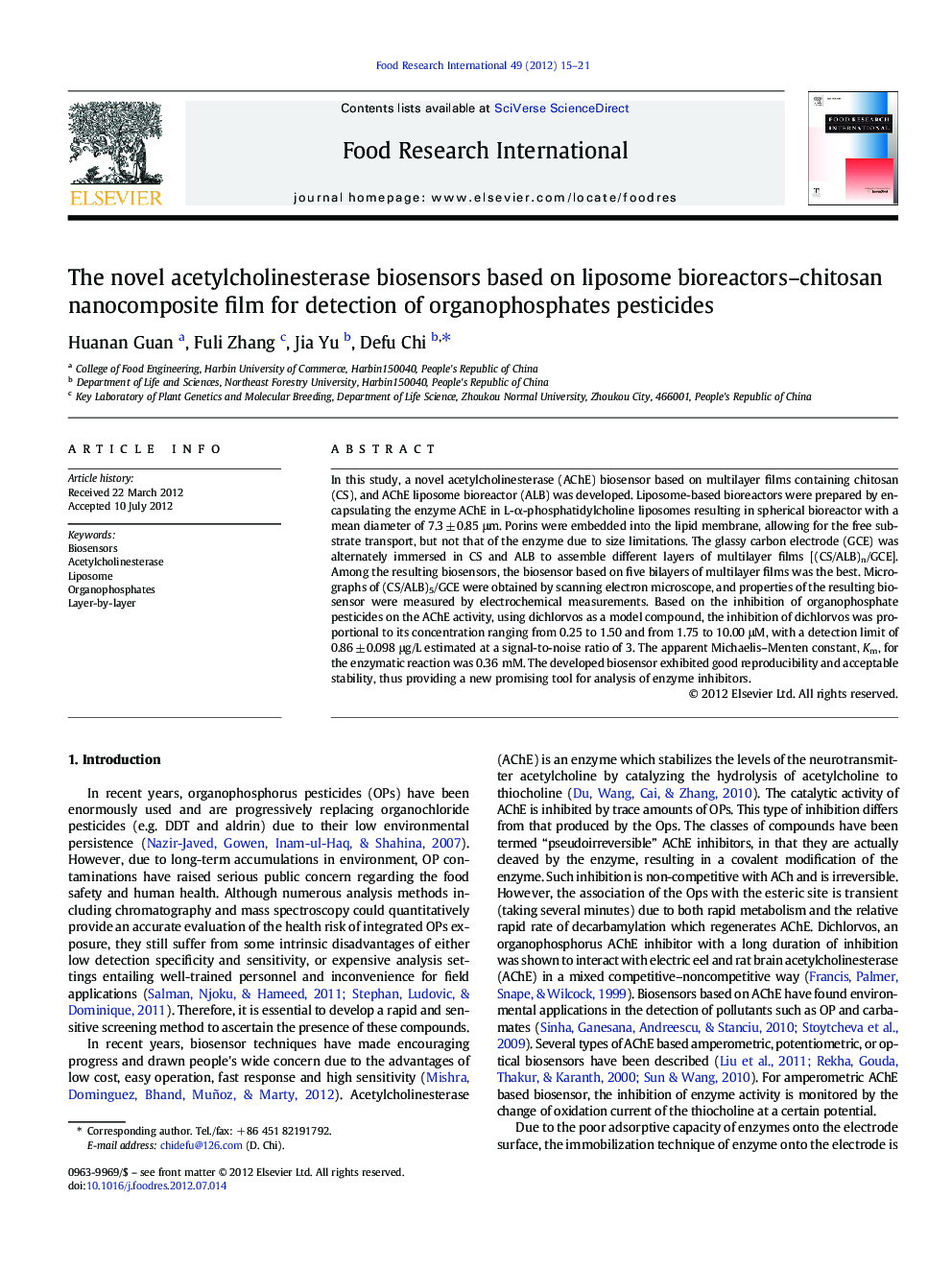| Article ID | Journal | Published Year | Pages | File Type |
|---|---|---|---|---|
| 6399010 | Food Research International | 2012 | 7 Pages |
In this study, a novel acetylcholinesterase (AChE) biosensor based on multilayer films containing chitosan (CS), and AChE liposome bioreactor (ALB) was developed. Liposome-based bioreactors were prepared by encapsulating the enzyme AChE in L-α-phosphatidylcholine liposomes resulting in spherical bioreactor with a mean diameter of 7.3 ± 0.85 μm. Porins were embedded into the lipid membrane, allowing for the free substrate transport, but not that of the enzyme due to size limitations. The glassy carbon electrode (GCE) was alternately immersed in CS and ALB to assemble different layers of multilayer films [(CS/ALB)n/GCE]. Among the resulting biosensors, the biosensor based on five bilayers of multilayer films was the best. Micrographs of (CS/ALB)5/GCE were obtained by scanning electron microscope, and properties of the resulting biosensor were measured by electrochemical measurements. Based on the inhibition of organophosphate pesticides on the AChE activity, using dichlorvos as a model compound, the inhibition of dichlorvos was proportional to its concentration ranging from 0.25 to 1.50 and from 1.75 to 10.00 μM, with a detection limit of 0.86 ± 0.098 μg/L estimated at a signal-to-noise ratio of 3. The apparent Michaelis-Menten constant, Km, for the enzymatic reaction was 0.36 mM. The developed biosensor exhibited good reproducibility and acceptable stability, thus providing a new promising tool for analysis of enzyme inhibitors.
⺠Acetylcholinesterase liposome bioreactor (ALB) was developed. ⺠The glassy carbon electrode was modified by chitosan and ALB based on layer-by-layer. ⺠The biosensor based on five bilayers of chitosan/ALB was the best. ⺠The developed biosensor exhibited good reproducibility and acceptable stability.
